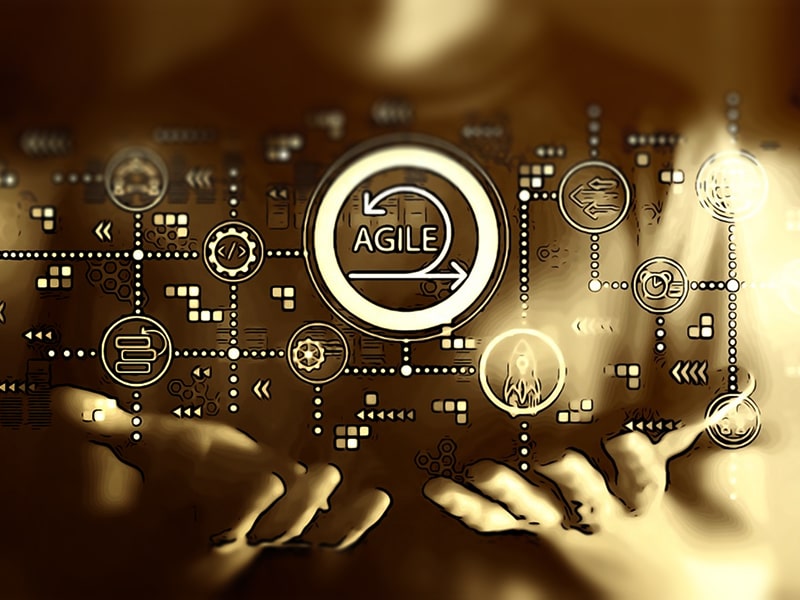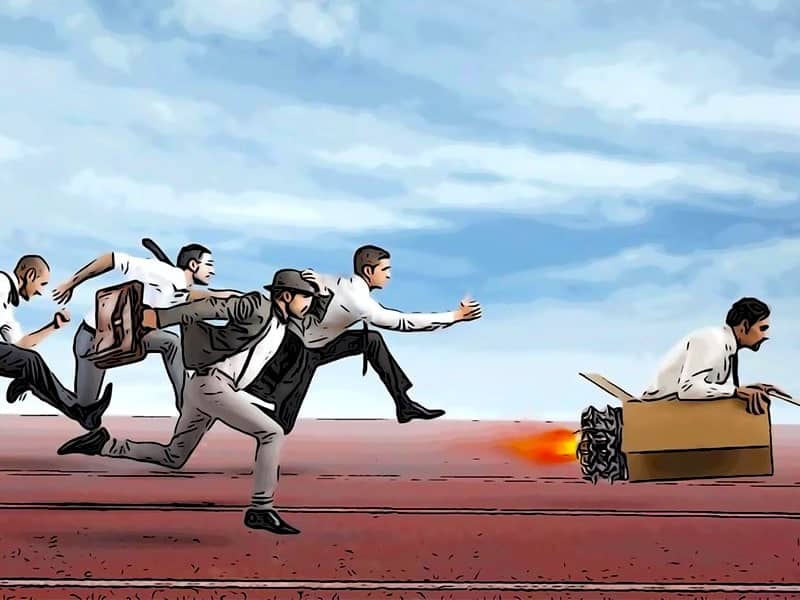
Every Tesla is unique because changes are made every day that make the car one of a kind. If you own a Tesla, there’s a good chance it will only exist once. Tesla is the only car manufacturer in the world that does this, and that is a competitive advantage that no one talks about, but everyone should know about. This article will explain what every Tesla investor should know to understand what he or she is invested in.

Many wonder what makes Tesla so different compared to other automakers, and there are many wrong answers to that simple question. Be it the founder, battery advantage, autonomous driving, or manufacturing, all are often mentioned and none of them illustrates that it’s the organization that is unprecedented in the industry. What Toyota made once the largest automaker in the world is to happen to Tesla.
When Elon Musk responded to my tweet that “manufacturing will be Tesla’s long-term strength,” most think it’s because of new innovative manufacturing technologies like the large casting machine, the specially designed Gigafactories, or the speed of innovation, but they miss the most important aspect of it, the organization. While a lot is written about Tesla every day, I haven’t seen a single article highlighting and explaining the massive competitive advantage that other automakers can’t duplicate, and most won’t even understand why they should.
A Model X gets 27 hardware and software changes a day. 27 unique differentiators that add up to a theoretical 135 a week, 540 per month, or 5,400 each year. A legacy automaker delivers a model refresh or update earliest after 2 and often after 5-7 years. At that time a Model X and all other Tesla Models incorporated thousands of hardware and software changes making the vehicle safer, quicker, easier to manufacture, cheaper to build, and in all aspects better. What a Tesla customer can’t express in words but usually in feelings is the result of thousands of little changes the automaker makes but legacy automakers avoid making because they believe it’s costly and their organization is not designed for it in short they believe it’s impossible.
Because the hardware and software of Tesla vehicles change so frequently, a dedicated person from the local government works at Tesla every day to review each car and sign off on its homologation to ensure it is ready to be delivered to a customer. No other automaker has a regulatory person who is constantly responsible for homologating and has a dedicated desk in the factory doing the job for every single car every day. What sounds inefficient is a new paradigm in mass manufacturing.
By incorporating a high frequency of changes in production per day, Tesla proves once again that it is a software rather than a hardware company, as this method and organization of work were invented in the software industry. The benefits are impressive, and despite all the claims from legacy automakers that this can’t work for mass-produced vehicles, Tesla has shown that it does.
While the approach of agile, small iterative steps of improvement is completely new and revolutionary in the automotive industry, Tesla has implemented the same process in building its Gigafactories. The rapid construction of Giga Shanghai, Austin, and even Berlin is a testament to the agile approach. In Germany, authorities initially described the approach of building the Giga Berlin factory, which was new and unfamiliar to them, as chaotic, without recognizing at first the amazing benefits.
The Shanghai factory, in particular, has impressively demonstrated that small daily changes in construction, speed up and improve construction toward the desired result. The same method is used in Berlin and Austin, while all other large constructions are planned for years and executed strictly according to a plan without deviation. In years all and everything changes and the finalized factory is therefore outdated at the time it’s finished. The same flexible approach is true for SpaceX, which explains the incredible and unprecedented speed of rocket construction and launch that SpaceX already has and continues to increase in the industry.
According to Joe Justice, a former Tesla manager and expert in the field of ‘Agile for Hardware’ the Model S changes hardware and software 27 times a day and that translates into a change about every 3 hours. In strong contrast to Tesla, all other automakers introduce hardware changes at a firm date like July 1st to manage logistics and they try to avoid frequent changes to optimize production throughput, purchasing efficiency, and costs. The closest automaker to Tesla with hardware changes every 3 hours is Toyota with changes for fast track products that are implemented every 2.5 years or about every 9,125 days.
Assuming a 2-shift production Tesla is almost 14,600 times faster with new systems and parts integration compared to the fastest competitor. For VW, BMW, and Daimler hardware changes are done about every 3-4 years and Ford, GM, Stallantis are even close to 4 years for a first hardware change. Because legacy automakers do all at once at one time many unexpected integration problems appear compared to taking a single new part at a time. The decentralized optimization of parts and systems used at legacy automakers focusing on costs conflicts with integration and speed of innovation that has comparably much higher leverage on costs and profits.
Elon Musk said for good reason that ‘all that matters, in the long run, is the pace of innovation’ which includes a new product, parts, and software integration and even Herbert Diess the VW Group CEO understands the issue when he said “the big question is, are we fast enough? If we continue at our current speed it is going to be very tough“. Many who can’t comprehend why Tesla is valued with $1 Trillion in market capitalization, more than the entire automotive industry together, don’t understand that company value is an expression of fast new product introduction.
As long as the entire automotive industry had an average new product introduction which includes parts and systems for not many changed vehicles every 3-4 years, consumers got used to it and considered it as normal. But since Tesla is a global company manufacturing and delivering in all major 3 continents consumers welcome frequent hardware and software changes as normal and all the benefits that come with it. If you can’t provide that benefit your product and service are inferior to them.
If a new product and part introduction is making a decisive difference why don’t all automakers do it as fast as Tesla today? The main reason why they can’t do it faster and likely will never get near the speed of Tesla is their Organization. It’s not just about what processes you run but about not having processes at all and employees and teams that self-organize to solve problems and challenges. A company’s organization can’t be easily changed and if the required changes are fundamental it’s better to start a new company on a greenfield than try to adjust an old one. The difference in how Tesla is organized is so fundamental that all legacy automakers won’t be able to adopt it and that’s a not recognized competitive advantage. All products you get out of an organization are an expression of the organization itself and you need to have agile employees to enable an agile organization.
At a traditional car manufacturer, there are several central decision-making levels, departments, and committees that determine, coordinate, and organize which parts will be included in the next NPI (New Product Introduction). These departments keep themselves busy for years because the process is long and most that have been decided before is at launch outdated and requires a rework. They literally run in circles not finding the end.
At Tesla, there is only a small cross-functional but decentralized team that organizes itself and makes all the decisions without approval or central coordination, for example, on a heat pump design change. Because of this, they don’t have to wait for anyone to tell them what to do and can make decisions very quickly and agilely. These teams are called “full-stack” because they have all the required expertise on the team and if they miss expertise they reach out for it.
No middle or even top Manager has to decide on a part for which they don’t have the expertise anyway and needs to be convinced in long meetings or compliance processes just to unlock the required budget. If feedback or approval is urgently needed for an NPI at Tesla you’ll get a Management response within 1 hour. To hinder or restrict an employee to talk to whatever Manager inhouse up to Elon Musk is a reason to be fired.
At Tesla, there are a lot of these teams that change daily. As an employee, you never really know what the new day will bring, and you may find yourself side by side with Elon Musk drilling, screwing, or assembling on the production line. Statements from workers on the line are weighted higher than statements from top managers who have not worked there. Every day, every third hour, decisions are made that have a significant impact on safety, costs, efficiency, and profits without management even noticing them. At Tesla, responsibility, accountability, and decision-making are being shifted back to where they belong, to the people and teams with the knowledge and expertise.
All changes need to be tested to assure they are safe for production and product use. Instead of reducing the frequency of testing incidents which is what legacy automakers are doing by accumulating all that changed every 2-4 years, Tesla reduced the cost of changes. A legacy automaker model change costs easily between $10m and $100m which is why they try to avoid changes and cumulate them to dates every 2-4 years. Tesla goes the opposite direction and automated the testing process and with that reduced the costs dramatically.
A good example of automated testing is the Dojo computer that is fundamentally a training and testing environment for FSD algorithms. Every through Dojo newly processed algorithm is a software change and includes innovation. More innovation means more added value and more added value means more market capitalization. While Analysts consider market capitalization as a calculative result out of a linear progression of margin, units, and profit the ‘Tesla principle’ is that every innovation adds an exponential and multiplying growth factor to profit and margin on all units. Because innovation is decentrally enabled and implemented even the Tesla top Management doesn’t know the future margins. The unlocked potential of margin and profit growth within Tesla is unrestricted and continues to grow because the space for improvement is almost endless. The invention of an organization that can access not expected areas of improvement is like an endlessly self-optimizing process and perpetual value generator.
In a traditional company, the management plays an important role in feedback, coordination, approval, and decision-making, but in an Elon Musk company, management plays a secondary role, literally working side-by-side on the front lines with regular workers. Innovations large and small are decided by small cross-functional teams in a Musk company that quickly decide and implement what is best for the good of the company. They do this because their primary compensation is based on stock options, and the value of the stock rises faster when they improve margin, profit, productivity, and safety features quickly and reliably. The design of parts and systems, as well as budget decisions, are made by these small teams, whereas traditional companies require multi-year processes where departments and management coordinate complexity, costing time and money.
The Tesla employee reward system, which is triggered more by stock options than salary, has already earned many employees millions of dollars, but they still work on the assembly line every day to achieve a bigger goal. Motivation is a secret source of Tesla’s continuous improvement process and the incredible pace of improvement. Because the company and its products evolve so quickly, employees leave mainly because they prefer a quieter lifestyle after a few years, but what they have given Tesla through agility and improvement is worth more than what Tesla has given them in millions of Dollars. Bonus and malus systems are a key limiting factor why traditional automotive companies will never be able to implement an agile organization.
Anyone who claims that departments such as procurement, purchasing, R&D, or budget and investment cycles are indispensable does not understand how true value creation works. Companies driven by customers and their feedback are successful, while companies driven by management are average at best. If the company that works best is driven by small cross-functional teams, and each employee works best with customer feedback, then the implication is that employees must have access to that customer feedback. Each member of the teams described above has up to 25 apps on their smartphones that provide a wealth of information about what is not working well for customers and could improve the situation.
The teams are not initiated centrally by management, but by decentralized employees who have a good idea and use the expertise of a self-organizing group to improve. Because they are self-organized no Manager needs to tell them anymore what to do when. Entire departments in traditional organizations and a huge amount of Managers are busy everyday planning and explaining to others what, how, and when to do something. Elon Musk eliminated a huge bulk of work and inefficiency by giving responsibility and accountability to those elements it belongs to – the employees. What you need is the right kind of employees, people that want to make a change and improve. Most who finalized a university, college, or education have the drive, spirit, and hunger to make that change and these are the employees Elon Musk companies want to hire.
All of that is a revolution for traditional organizations and the reason why legacy automakers, as well as rocket companies, will not keep pace with Tesla and SpaceX. All of that described is what I call the ‘Tesla Principle’ because it’s more than ‘Agile’ – it’s a paradigm shift.
Disclaimer: The inspiration of this article comes from a former Tesla Manager Joe Justice and the fantastic insights he provides in his highly recommended YouTube videos as well as interviews and conversations I had with Tesla employees.
About the author
Alex Voigt has been a supporter of the mission to transform the world to sustainable carbon free energy and transportation for 40 years. As an engineer, he is fascinated about the ability of humankind to develop a better future via the use of technology. As a German, he is sometimes frustrated about the German automotive industry and its slow progress with battery electric vehicles which is why he started to publish in English and German. With 30 years of experience in the stock market, he is invested in Tesla [TSLA], as well as some other tech companies, for the long term.










